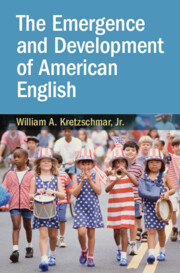Refine search
Actions for selected content:
3386782 results
Interpreting Sellars
- Critical Essays
- Coming soon
-
- Expected online publication date:
- March 2026
- Print publication:
- 31 March 2026
-
- Book
- Export citation
The Resilience of the Old Regime
- Paths Around Democracy in Europe, 1832–1919
- Coming soon
-
- Expected online publication date:
- March 2026
- Print publication:
- 31 March 2026
-
- Book
- Export citation
Ethnic Stereotypes and the Letters of Paul
- History and Reception
- Coming soon
-
- Expected online publication date:
- March 2026
- Print publication:
- 31 March 2026
-
- Book
- Export citation
Technocrats in Turmoil
- The Fed, the ECB, and the Changing Politics of Money
- Coming soon
-
- Expected online publication date:
- March 2026
- Print publication:
- 31 March 2026
-
- Book
- Export citation
Defending Democracy
- Citizenship as a Vocation
- Coming soon
-
- Expected online publication date:
- March 2026
- Print publication:
- 31 March 2026
-
- Book
- Export citation
Flow Cytometry in Hematolymphoid Neoplasms
- A Comprehensive and Practical Guide to Diagnosis
- Coming soon
-
- Expected online publication date:
- March 2026
- Print publication:
- 31 March 2026
-
- Book
- Export citation
Race on Screen
- Audience Racism in Twentieth-Century Britain
- Coming soon
-
- Expected online publication date:
- March 2026
- Print publication:
- 31 March 2026
-
- Book
- Export citation

Carlo Borromeo and the Sacred Image in Sixteenth-Century Italy
- A Reformer's Itinerary
- Coming soon
-
- Expected online publication date:
- March 2026
- Print publication:
- 31 March 2026
-
- Book
- Export citation

The Emergence and Development of American English
- Coming soon
-
- Expected online publication date:
- March 2026
- Print publication:
- 31 March 2026
-
- Book
- Export citation
Physical-Geometric Optics for Light-Scattering by Nonspherical Particles
- Applications to Remote Sensing and Climate Science
- Coming soon
-
- Expected online publication date:
- March 2026
- Print publication:
- 31 March 2026
-
- Book
- Export citation
Practical Social Democracy
- Coming soon
-
- Expected online publication date:
- March 2026
- Print publication:
- 31 March 2026
-
- Book
- Export citation
Governance by Emulation
- The Oversight Board, the Digital Services Act, and the Struggle for Platform Accountability
- Coming soon
-
- Expected online publication date:
- March 2026
- Print publication:
- 31 March 2026
-
- Book
- Export citation
Ecology and Climate in Theatre and Australian Performance
- Coming soon
-
- Expected online publication date:
- March 2026
- Print publication:
- 31 March 2026
-
- Book
- Export citation
Universalism and Regionalism in the Early Islamic World
- The Beginnings of Local History-Writing
- Coming soon
-
- Expected online publication date:
- March 2026
- Print publication:
- 31 March 2026
-
- Book
- Export citation
Interlanguage Grammars of Mandarin Chinese
- Coming soon
-
- Expected online publication date:
- March 2026
- Print publication:
- 31 March 2026
-
- Book
- Export citation
Law for the Land
- The Public Trust Doctrine, Mono Lake, and a Quiet Revolution in Environmental Rights
- Coming soon
-
- Expected online publication date:
- March 2026
- Print publication:
- 31 March 2026
-
- Book
- Export citation
The Politics of Nature in Nazi Germany
- Environmental Ideals and the Myth of Blood and Soil
- Coming soon
-
- Expected online publication date:
- March 2026
- Print publication:
- 31 March 2026
-
- Book
- Export citation
Building an Air Force
- The Air Corps and the Formation of US Airpower
- Coming soon
-
- Expected online publication date:
- March 2026
- Print publication:
- 31 March 2026
-
- Book
- Export citation
Making Protest
- The Role of Protest Brokers in South Africa's Urban Landscape
- Coming soon
-
- Expected online publication date:
- March 2026
- Print publication:
- 31 March 2026
-
- Book
- Export citation

Why is There Something Rather than Nothing?
- The Fundamental Problem of Ontology
- Coming soon
-
- Expected online publication date:
- March 2026
- Print publication:
- 31 March 2026
-
- Book
- Export citation
